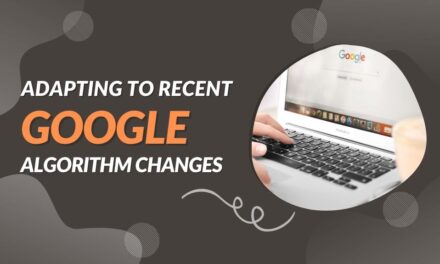In the competitive online environment, being ahead involves more than just following current trends; it requires predicting future ones. Anticipatory SEO is an effective tactic that allows companies to predict upcoming trends and adapt their content and search tactics accordingly. Predictive SEO differs from traditional SEO by being proactive, utilizing data and analytics to anticipate and target upcoming popular topics and search behaviors, rather than simply optimizing for current keywords and trends. This proactive strategy can provide businesses with a notable edge, particularly in sectors with fast-changing trends.
Predictive SEO is particularly valuable for companies looking to maintain relevance in fast-paced markets. By using insights from search patterns, social media, and industry shifts, businesses can create content that aligns with future demand. This not only improves search rankings but also positions a business as a thought leader—one that’s in touch with emerging topics. As more consumers expect personalized and timely content, staying ahead of trends through predictive SEO becomes crucial for visibility, engagement, and growth.
Understanding Predictive SEO: What It Is and Why It Matters
Predictive SEO is the process of using data-driven techniques to anticipate shifts in search trends and user behaviors. Unlike traditional SEO, which relies on optimizing for current and past search trends, predictive SEO focuses on forecasting what users will search for next. This shift in approach allows businesses to adapt their content strategy ahead of time, creating content that answers future queries and meets upcoming search intent. This strategy relies heavily on data, including historical search data, social media trends, and even competitor analysis, to develop insights that predict shifts in user behavior.
What is the significance of predictive SEO? Firstly, it gives businesses a competitive advantage. In a time when the online market is saturated, being the first to write about a new subject can result in better placement and more visitors. Those who are quick to use predictive SEO strategies also enjoy less competition, since they are creating content on subjects that are not yet oversaturated in the market. Anticipating what users will be interested in through predictive SEO not only benefits businesses by creating relevant and valuable content but also improves user experience and fosters brand loyalty.
Leveraging Data Analytics to Anticipate Search Trends
Data analytics forms the foundation of predictive SEO. By analyzing historical data, seasonal search patterns, and user behavior, businesses can identify emerging trends before they gain widespread attention. Tools like Google Trends, SEMrush, and Ahrefs provide valuable insights, enabling marketers to track search volume fluctuations, keyword performance, and changes in user interests. These tools are essential for spotting patterns that indicate which topics or keywords are likely to grow in popularity. For instance, Google Trends offers insights into keyword search behavior over time, helping marketers identify trends as they start to develop.
Machine learning algorithms also have a major impact on improving the predictive abilities of SEO strategies. These algorithms analyze large data sets to uncover patterns and connections that may not be obvious to human analysts at first glance. Businesses can enhance their forecasting accuracy by incorporating machine learning into data analysis. This method allows a company to customize its SEO strategies to match new trends, leading to better content optimization and search visibility in the end.
Predictive analytics also allows businesses to respond to shifts in consumer sentiment. For example, during seasonal or cultural events, predictive SEO can help identify which products or services will be in demand, guiding content creation efforts to meet these anticipated needs. By leveraging data analytics, businesses can create a more adaptive search strategy that evolves with changing market dynamics.

Identifying Emerging Trends with Predictive SEO Techniques
To effectively capture emerging trends, businesses must employ a mix of predictive SEO techniques. These tactics not only identify trends but also prioritize the topics with the most potential impact.
Trend Monitoring: Regularly tracking industry news, social media discussions, and search engine updates is essential. Staying informed about developments in your industry helps identify trends as they begin to surface. By tracking news articles, blog posts, and industry reports, businesses can adjust their search strategies in real-time, ensuring they remain relevant.
Competitor Analysis: Analyzing competitors’ content and keyword strategies offers insights into emerging topics that are gaining traction. By studying what competitors are covering, businesses can find gaps and opportunities within their own content strategy. Competitor analysis also helps businesses understand what works well in their industry, providing a framework for adapting and innovating their approach to content optimization.
Social Listening: Social media plays a crucial role in tracking current conversations and new trends. By monitoring platforms such as Twitter, Instagram, and LinkedIn, businesses can obtain information on consumer opinions and popular subjects. Tools like Brandwatch and Hootsuite monitor mentions, hashtags, and discussions that mirror user interests, assisting in shaping content strategies to meet present and future requirements.
Integrating these techniques into an SEO strategy allows businesses to anticipate and capitalize on emerging trends, making their content more relevant and engaging. With a proactive approach, companies can secure early visibility on new topics, driving organic traffic before trends reach their peak.
Creating Content for Future Demand: Strategies and Best Practices
Once emerging trends are identified, the next step is to create content that aligns with anticipated user demand. Content optimization for future search intent requires strategic planning and adaptability.
Keyword Forecasting: Using predictive analytics to identify keywords likely to grow in popularity ensures content is optimized for future search demands. Tools like Ahrefs and Moz allow marketers to conduct keyword research that goes beyond current trends, focusing instead on keywords poised for growth. By incorporating these keywords into their content early, businesses position themselves to rank well as trends gain traction.
Content Diversification: Providing a range of content types, such as blogs, videos, and infographics, meets the needs of diverse audience preferences. Through diversification of content, companies can expand their audience and enhance interaction. Videos and infographics are very easily spread on social media platforms, which can enhance a brand’s exposure and increase website visits.
User-Centric Approach: Predictive SEO isn’t just about keywords; it’s about providing value to users. By focusing on anticipated user needs, businesses can create content that answers questions, solves problems, and offers insights that align with future search queries. This user-centric approach builds trust and fosters loyalty, as users are more likely to return to a brand that consistently meets their needs.
Creating content for future demand also means being flexible. As trends evolve, so should content strategies. Keeping content updated and adding new information helps maintain relevance, ensuring it continues to meet users’ changing needs.

Measuring the Effectiveness of Predictive SEO Efforts
After implementing predictive SEO strategies, measuring their effectiveness is crucial. KPIs offer insights into how well a predictive SEO approach is working and where improvements might be needed.
Traffic Growth: Increases in organic traffic are a strong indicator of successful alignment with emerging trends. Monitoring traffic growth helps determine whether content is resonating with users and driving engagement. Google Analytics provides a clear view of traffic sources, allowing businesses to assess the impact of predictive SEO efforts on overall traffic.
Keyword Ranking Shifts: Monitoring fluctuations in keyword rankings is crucial for assessing how content optimization affects search engine visibility. Businesses can adapt their strategy by observing the movement of keywords in SERPs to target more promising terms. This understanding improves SEO strategies, guaranteeing their ongoing effectiveness.
Engagement Metrics: Engagement metrics such as bounce rate, time on page, and conversion rates offer valuable feedback on user interaction with content. High engagement indicates that the content is relevant and meets user expectations, while low engagement may suggest a need for refinement. These metrics provide a holistic view of content performance, helping businesses identify strengths and areas for improvement.
Regularly reviewing these KPIs ensures that predictive SEO strategies are achieving the desired results. By creating a feedback loop, businesses can refine their approach and continuously improve their search strategy.
Conclusion
Integrating predictive SEO into a search strategy is crucial for companies aiming to remain competitive in the fast-paced digital landscape of today. By predicting upcoming trends and adjusting content accordingly, businesses can improve their visibility, involve their desired audience, and stay ahead in the market. Anticipatory SEO enables businesses to be proactive rather than reactive, identifying opportunities before competitors do.
The key to successful predictive SEO lies in data-driven decision-making and adaptability. As search trends continue to evolve, businesses that embrace predictive SEO will be well-positioned to capture new traffic, meet user needs, and build brand authority. By leveraging insights from predictive analytics, trend monitoring, and user engagement metrics, companies can craft a search strategy that not only captures current opportunities but also positions them for future success.












